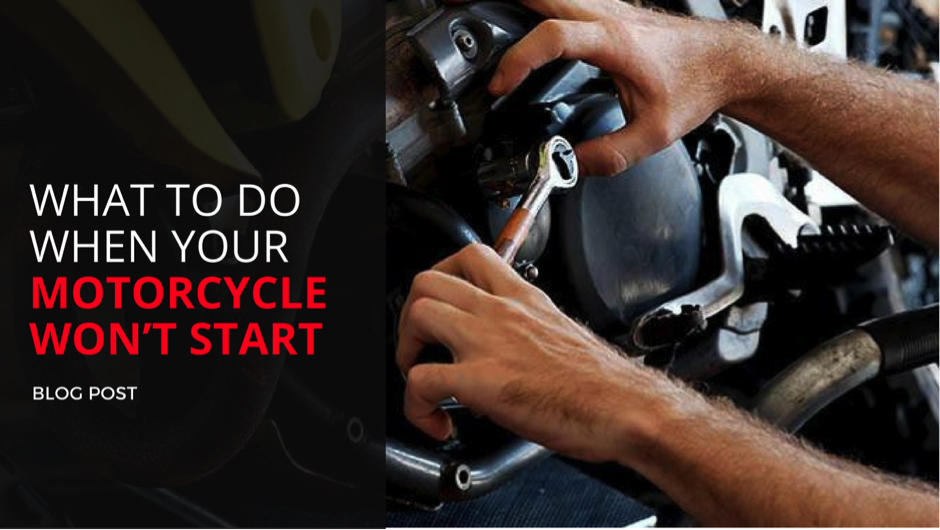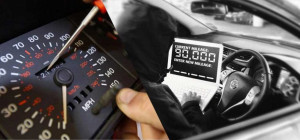 As a motorbike school that provides professional motorcycle lessons, a question we get is what do I do when my motorbike won’t start?
As a motorbike school that provides professional motorcycle lessons, a question we get is what do I do when my motorbike won’t start?
You’re in a rush trying to get somewhere and when you turn on your bike, it won’t start. It literally doesn’t start up. This can lead to frustration and irritation, especially in the heat of the moment when you need to be somewhere.
In this situation, it’s handy to know a few techniques to get your motorbike up and running. Knowing these simple techniques can save you a world of money and time. In this post, we will cover a few tips that can help you when trying to start your motorcycle.
Basic Troubleshooting
Basic troubleshooting can help you identify what the issue is that is preventing your bike from not starting. To troubleshoot your bike, it will help to have some foundational knowledge of motorcycle tools and parts such as removing a spark plug, draining the carburettor and using a voltmeter. Thankfully, these tools can be bought at very affordable prices.
Ultimately, there are three factors a motorcycle needs to function smoothly; fuel (obviously) and the compression and spark. If these three factors are all healthy, your motorcycle will never ditch you. Are you ready to become a motorbike mechanic? Follow these steps to get started.
Spark
Even for everyday riders, it can be tricky to troubleshoot electrical issues. Electric signals constantly warn us but many of us take it for granted until something goes wrong. In most cases, it can be puzzling to figure out what the problem is if you have little or no experience.
Before digging into your toolbox, it’s always advisable to look out for some basic signals such as the key being turned “On” and whether the switch status is on “Run”. When assessing these signals, keep your bike in neutral and ensure the kickstand is up. You may find it obvious, but we often overlook these simple points.

Ok so you’ve looked out for all the basic signals, but your bike is still not working. What next? You need to further assess your engine in detail. To do this,
- Take off your spark plugs from the cylinder and plug them into the plug cap.
- Hold up the plug using a head bolt and turn on the engine.
- There should be a spark passing from the electrode towards the metal.
Note the spark type. Is it weak or strong? Keep changing plugs and trace the results until you get a strong spark/ ignition. You may also need to investigate the plug wires and caps because if it’s in poor condition, it will affect the process. If there are any problems with the wires or plug caps, remove them.
The next step is to check the status of the ignition coil, CDI box, regulator and other electrical components.
Air/Fuel Mixture
You will now need to assess the fuel. To do this, you will have to perform some basic troubleshooting. The very first thing to check is your fuel petcock status. Does it say ON or Reserve? Then look out for the gas in the tank. It should be evenly distributed. More often than not, you will encounter problems related to fuel especially if your motorcycle was being stored for a long period of time. In addition, the gas may break down if not stabilized properly.
If your motorbike has been set to a no-run status for a long period of time, then you may find that the fuel system has dried out. Fuel lines require attention because they pass gas to your carbs and throttle body to run your bike smoothly. If dried out, fuel lines may crack. If your motorcycle is an old carbureted bike, you may need professional help in starting the fluid and carb cleaner. Once your bike gets fired on a starting fluid, the gas will quickly pass in through the fuel system. However, if your bike keeps on dying out after running on a starting fluid for some time, then you need to further assess the problem.

Another part to inspect is your vent tube, if it’s clogged, gas will not be allowed to cross through the system. Sometimes your bike may experience a flood and won’t start the very next day, you will then need to un-flood your motorcycle engine by removing the spark plugs. Then turn off the choke and turn the motor on to allow the excess gas to dissipate.
If your fuel is not flowing down properly, it is recommended that you clean the carbs because the fuel pump is connected to the carbs. You need to ensure that your carbs do not contain any junk that blocks your jets. After cleaning the carbs, also check if your fuel pump is in a good condition. Your combustion chamber must have some air to mix with gas. However, if your vacuum line is broken, it may allow more air to pass into the chamber which will disturb the air-fuel balance and your engine may not ignite. Conversely, a small amount of air can also be an issue so always try to use a filter for passing air.
Compression
As mentioned above, the compression is one of the critical parts that determine whether your bike will start. To fire an engine. your cylinder should not have a low, or no, compression. Otherwise, your engine and bike will have no chance of starting. Compress the air/fuel mixture to raise the temperature and make it ready for combustion. If you want to ignite a mixture, there should be enough compression. You can also use a compression tester to check if your bike has a good compression level. A low compression may result in worn out piston rings, a scored piston or cylinder, a worn crank seal or a head gasket.

If you follow these tips, you should be able to troubleshoot your motorcycle, or at least be on the right track. Of course, the tips mentioned in this post aren’t guaranteed to work all the time, but they will definitely assist you in reviving a motorbike.







